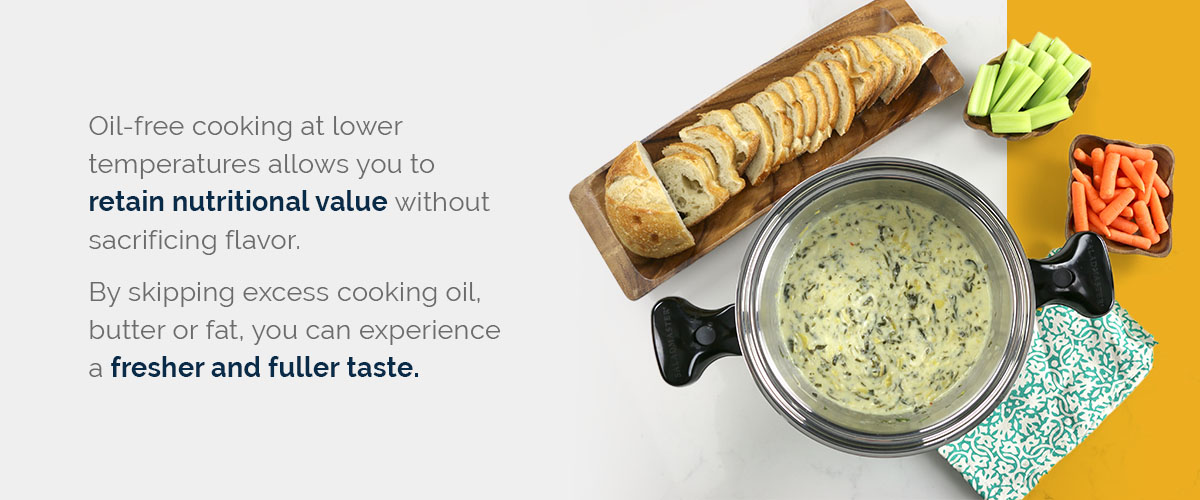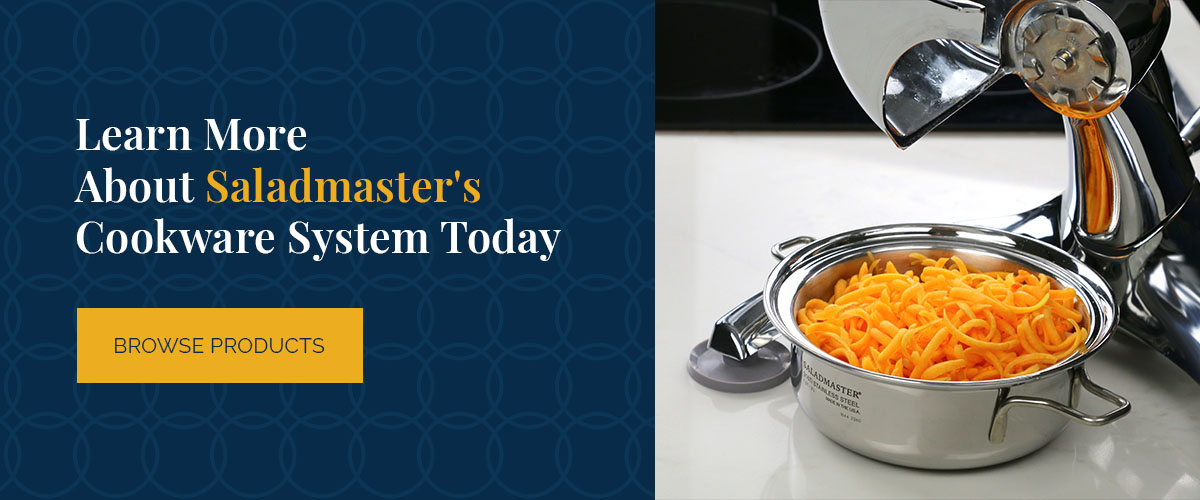Benefits of Low Heat Cooking
While we may not always realize it, the temperature at which we cook food can significantly influence its nutritional value. If you want to enhance your dish with essential nutrients, moisture and flavor, low-temperature cooking is an excellent method to achieve these qualities. Meanwhile, high heat cooking may result in loss of nutrients and increased heart disease risk.
If healthy cooking is important to you and your family, consider steering away from high-temperature cooking methods and opting for low heat cooking instead. Read on to learn more about low-temperature cooking, some different methods and their considerable benefits.
What Is Low-Temperature Cooking and What Are Its Benefits?
Low heat cooking involves cooking food — like meat, fish or vegetables — at a low temperature usually less than 300 degrees Fahrenheit. Cooking time can vary depending on the method of low-temperature cooking. While some low heat methods can prepare food in a matter of minutes, others may require over a day to execute. We'll provide some examples of low-temperature cooking methods later on.
This cooking method allows food to retain essential nutrients, moisture, softness and flavor. To give you a better idea, let's explore the benefits of low-temperature cooking in more detail.
1. Retains Nutritional Value
The way you prepare your meal impacts its nutritional value. For instance, you can take a healthy vegetable like a potato and turn it into junk food by frying it in oil and salting it. Frying increases salt, calorie and fat content, making it a rather unhealthy cooking method. Meanwhile, broiling food can be better for your arteries because it requires little to no oil, limiting the number of calories and saturated fat.
Low-temperature cooking helps prevent stripping foods of their nutritional benefits. It also helps ensure the food does not overheat — this, in turn, preserves its vitamins and nutrients while making it easier to digest.
2. Preserves Moisture
Biting into a dry, tough piece of meat is never a fun experience — and it makes for another reason why low-temperature cooking is a great method. When you slow cook meat at low heat, it melts and tenderizes the fat and connective tissue. This gives dishes like pulled pork, soups and stews the ideal texture and flavor — moist, juicy and rich.
Additionally, low-temperature cooking is known to bring out the best flavors in vegetables. It makes them softer, more flavorful and sweet. This method also reduces shriveling while cooking them more evenly. Potatoes, for example, are firm and golden-brown on the outside and floury and fluffy on the inside. If you're looking to make a delicious pot roast, slow cooking the meat and vegetables at low heat is an excellent method to achieve the savory, well-rounded flavors you desire.
3. Enhances Flavor
Many recipes depend on oil, butter or fat to add flavor. However, margarine and cooking oils — like olive, sunflower, soybean and palm oil — are high in omega-6 and omega-3 acids. These can increase the risk of chronic inflammation, obesity, heart disease and other health effects when consumed in high amounts.
In addition, many of these oils are cooked at high temperatures. This exposes them to higher oxygen levels that can produce potentially harmful compounds and an unpleasant taste.
Oil-free cooking at lower temperatures allows you to retain nutritional value without sacrificing flavor. By skipping excess cooking oil, butter or fat, you can experience a fresher and fuller taste. Low heat cooking also locks in moisture to maintain the food's natural flavor.

4. Avoids the Production of Acrylamides
Acrylamide is a chemical that forms in certain foods after cooking them at high temperatures. It's often found in coffee and starchy foods like French fries, breakfast cereals and bread. However, it can also be used to make dyes, paper and plastics, as well as treat wastewater and drinking water. It's also present in cigarette smoke.
Acrylamide can be potentially harmful as it's considered a carcinogen — a cancer-causing agent. Fortunately, low-temperature cooking prevents acrylamide development. Limiting unhealthy cooking methods like frying and roasting — and cutting down cooking times — can help reduce acrylamide exposure in foods.
What Are the Drawbacks of High Heat Cooking?
Since we've covered multiple benefits of low-temperature cooking, you may be wondering — is high heat cooking healthy as well?
All things considered, high heat cooking is a rather unhealthy method. Cooking in a higher temperature range may lead to the drawbacks listed below:
- Loss of nutrients: Due to many chemical reactions that occur, high heat can drastically decrease the nutrients — like Vitamin B1 and C, folic acid and more — in foods. It causes damaging reactions with sugars and proteins in those foods, which may increase disease risk.
- Heart disease risk: Any high-temperature cooking can increase blood pressure over time. This may increase the risk of heart disease, heart attacks, strokes and other life-threatening conditions.
- Acrylamide: As mentioned previously, high heat cooking can increase acrylamide production, which may potentially increase cancer risk.
Top Methods for Low Heat Cooking
Thanks to advancements in cooking technology, it's easy and convenient to cook foods at low temperatures — not to mention you won't have to worry about any serious loss of nutrients, flavor or moisture. Let's explore some of the best methods for low-temperature cooking below.
Slow Cooking
This method cooks food slowly and thoroughly in a rounded, lidded pot in the oven or on a stovetop. This covered pot locks in cooking juices to minimize nutrient loss.
Slow cooking can take anywhere from 1.5 to 7 hours, depending on the dish and cooking temperature. It's a convenient, time-saving method for busy families.
Sous Vide
Semi vacuum cooking, or sous vide, cooks food at low heat in vacuum-packed plastic bags in a temperature-controlled water bath. Sous vide uses the lowest temperature range, around 120 to 160 degrees Farenheight. This method typically requires a longer cooking time, sometimes well over 24 hours.
While sous vide typically refers to vacuum-sealed bags, it can describe any type of cooking in temperature-controlled water, whether you're using a vacuum-sealed bag or not.
Saladmaster's Vapo-Valve Technology
At Saladmaster, our Vapo-Valve™ technology uses a semi-vacuum system to make cooking more efficient and precise. When your food exceeds optimal cooking temperature, the built-in valve clicks. This way, you know when to reduce the heat to avoid overcooking. You can also cook without adding or draining water.
Our semi-vacuum cooking method reduces cooking time considerably so you can enjoy your food faster. It locks in moisture to maintain your food's natural flavor as well — no added oil or fat necessary!
Learn More About Saladmaster's Cookware System Today

Now that you've learned about some low heat cooking methods and their benefits, we hope you'll consider our advanced and efficient cookware to enhance your recipes. Cooking with Saladmaster allows you to skip excess fat, butter and oil so you can enjoy healthier recipes without sacrificing delicious taste. To learn more about our cookware systems, browse our selection or contact us today!
36879